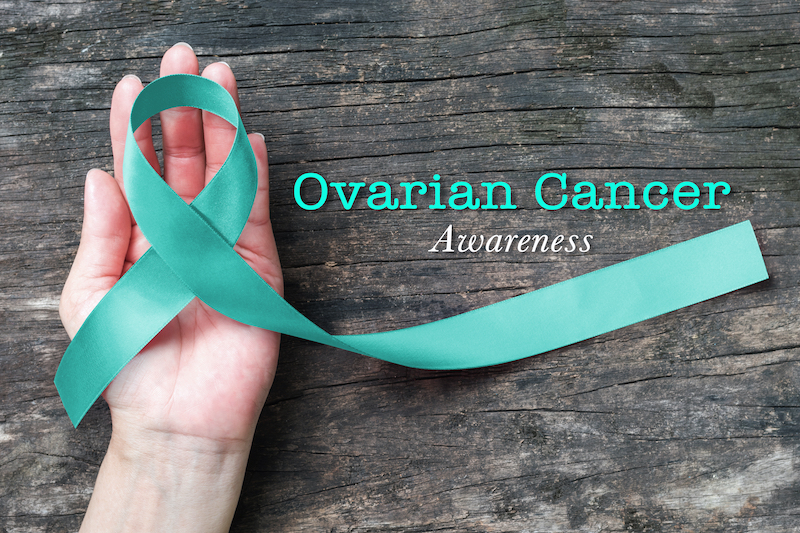


In February, Ovarian Cancer Awareness month aims to raise awareness of the signs and symptoms, educate women on diagnosis and treatment options and share stories of real women affected by the disease.
Each year 1,510 women in Australia is diagnosed with ovarian cancer, and 3 women die each day from the condition. Ovarian cancer is the deadliest women’s cancer, often going undetected until it has spread to the pelvis and stomach.
Here’s what you need to know about ovarian cancer.
What is ovarian cancer?
Ovarian cancer is a disease where some of the cells in one or both ovaries start to grow abnormally and develop into cancer. The ovaries are two small organs in the female reproductive system and are made up of 3 main kinds of cells – epithelial cells, stromal cells and germ cells. Each of these can develop into a different type of tumour.
What are the signs and symptoms?
There are often no obvious signs, however you may experience one or more of the following symptoms:
- Excessive fatigue
- Indigestion or nausea
- Unexplained weight gain or loss
- Feeling full after a small amount of food
- Changes in bowel habits
- Lower back pain
- Abdominal or pelvic pain
- Bleeding after menopause or in-between periods
- Pain during sex or bleeding after sex
- Needing to urinate often or urgently
- Increased abdominal size or bloating.
The home doctor experts at House Call Doctor advise that if you experience these symptoms consistently over a four-week period you should consult your local GP or healthcare professional.
What are the risk factors?
The most common risk factors that can increase your chances of ovarian cancer are:
- Family history of ovarian, breast or bowel cancer
- Over 50 years of age
- Endometriosis
- Using hormone replacement therapy
- Previously had breast or bowel cancer
- Smoking or obesity
- Never having children or having children later in life
- Genetic mutations.
What are the diagnosis and treatment options?
Unfortunately, there is no early detection test for ovarian cancer. If you are experiencing possible symptoms, your doctor may suggest the following tests:
- Physical examination
- Blood tests
- Imaging scans
- Ultrasound
- CT scan
- PET scan
- Colonoscopy.
Treatment usually involves a combination of surgery, chemotherapy and sometimes radiotherapy. The type of treatment depends on the type and stage of the ovarian cancer and the general health of the patient. Surgery is the main treatment method and is used to confirm the diagnosis, work out what type of ovarian cancer it is and the stage it is in, and remove as much of the impacted cells as possible. Chemotherapy is also used and aims to either destroy the cells or slow down or stop growth while causing the least possible damage to healthy cells.
How can you make a difference?
How can you make a difference?
There are many things you can do to take action during this month and beyond. Help raise awareness of ovarian cancer through talking with friends and family to ensure they are educated about it. Seek medical advice from your GP about your ovarian cancer risk and encourage others to do the same.
Through the Ovarian Cancer Australia website, you can download an awareness brochure and kit to display at your GP surgery or workplace. You can also donate to help save lives and support women. On Wednesday 26th February you can partake in Teal Ribbon Day which is a day to support Australians living with ovarian cancer while honouring those we have lost. You can purchase a $3 teal ribbon from the website and participating pharmacies.
Useful links:
Support resources: https://ovariancancer.net.au/how-can-we-help-you/support-resources/
Teal Ribbon Day: https://ovariancancer.net.au/trd2020/
Cancer Council information: https://www.cancer.org.au/about-cancer/types-of-cancer/ovarian-cancer.html




